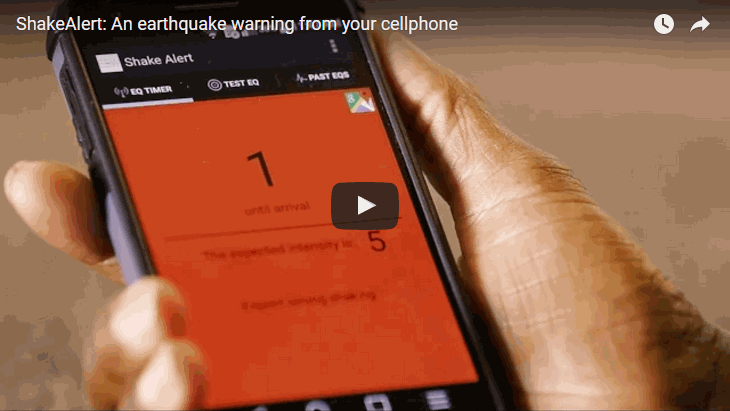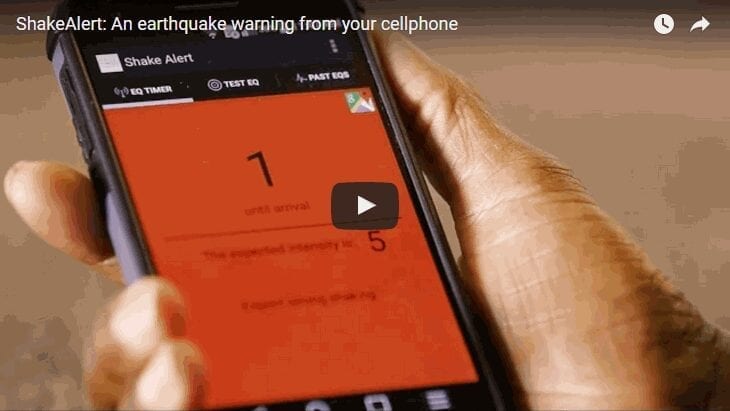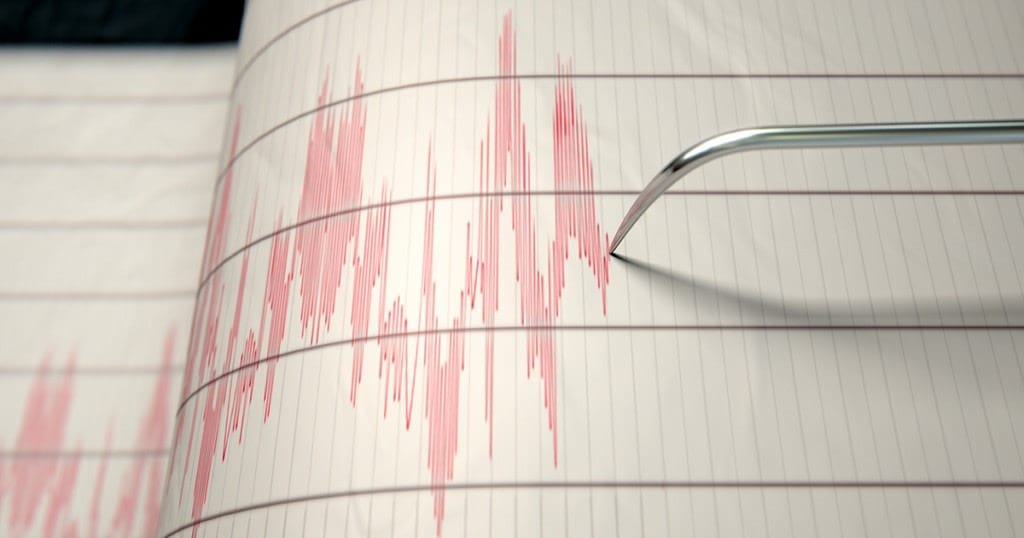
UC Berkeley scientists today are releasing a free Android app that taps a smartphone’s ability to record ground shaking from an earthquake, with the goal of creating a worldwide seismic detection network that could eventually warn users of impending jolts from nearby quakes.
Taking advantage of gaming accelerometers
Smartphones can easily measure movement caused by a quake because they have three built-in accelerometers designed to sense the orientation of the phone for display or gaming. While constantly improving in sensitivity for the benefit of gamers, however, smartphone accelerometers are far less sensitive than in-ground seismometers. But they are sensitive enough to record earthquakes above a magnitude 5 — the ones that do damage — within 10 kilometers. And what these accelerometers lack in sensitivity, they make up for in ubiquity. There are an estimated 16 million smartphones in California, and 1 billion smartphones worldwide.
“Currently, we have a network of 400 seismic stations in California, one of the densest in the world,” Allen said. “Even if we get only a small fraction of the state’s 16 million mobile phones participating in our program, that would be a many-orders-of-magnitude increase in the amount of data we can gather.”
In a paper to be published in the Feb. 12 issue of the journal Science Advances, Allen, Kong and Louis Schreier at Deutsche Telekom’s Silicon Valley Innovation Center describe the algorithm in the mobile app that analyzes a phone’s accelerometer data and distinguishes earthquake shaking from normal vibrations, such as walking, dancing or dropping the phone. In simulated tests, the algorithm Kong developed successfully distinguished quakes from non-quakes 93 percent of the time. Only when the app determines that the vibration is from a quake does it briefly activate the phone’s GPS to obtain the phone’s position and push a short packet of information out through a data or wifi connection.
Allen hopes that thousands of people will download and install the app so that he and his colleagues can give MyShake a good test. If successful, he anticipates an updated app that provides early warning within a year.
He also discussed MyShake and other earthquake early warning systems during a scientific session on Friday, Feb. 12, during the annual meeting of the American Association for the Advancement of Science in Washington, D.C.
Critical role for in-ground seismic network
A West Coast early warning system got a big boost in this year’s federal budget when $8.2 million was appropriated to help the U.S.G.S. create such a system in conjunction with UC Berkeley, the universities of Washington and Oregon and Caltech. Allen and other seismologists gathered on Feb. 2 at the White House to discuss earthquake early warning plans and a new initiative to make all federal buildings earthquake-proof.
An early warning system along America’s earthquake-prone Pacific edge would be based on a prototype called ShakeAlert now undergoing testing in California, Oregon and Washington. In the San Francisco Bay Area, agencies such as the Bay Area Rapid Transit system already receive warnings from ShakeAlert, such as a 5-second alert after the 6.0 magnitude quake that struck nearby Napa in August 2014. At the White House meeting last week, the Gordon and Betty Moore Foundation committed $3 million to further develop ShakeAlert, and another $1 million for MyShake.
In simulated tests based on real earthquakes, MyShake was able to provide timely early warning as well as or better than ShakeAlert.
Learn more: New app turns smartphones into worldwide seismic network
The Latest on: Worldwide seismic network
[google_news title=”” keyword=”worldwide seismic network” num_posts=”10″ blurb_length=”0″ show_thumb=”left”]
via Google News
The Latest on: Worldwide seismic network
- Earthquake rattles central New Jersey, 45 miles west of NYCon April 27, 2024 at 10:05 am
A 2.9 magnitude earthquake rattled parts of Somerset County, N.J. Saturday morning, according to the U.S. Geological Survey.
- Japan Earthquake: Bonin Island hit by magnitude 6.5 earthquake, USGS says | Oneindia Newson April 27, 2024 at 6:40 am
A magnitude 6.5 earthquake struck Japan's Bonin Islands, as reported by the United States Geological Survey (USGS) on Saturday (April 27). The quake occurred at a depth of 503.2 km ...
- Earthquake of magnitude 6.5 strikes Japan's Bonin Islands, USGS sayson April 27, 2024 at 1:07 am
An earthquake of magnitude 6.5 struck Japan's Bonin Islands, the United States Geological Survey (USGS) said on Saturday.
- A strong magnitude 6.1 earthquake shakes Indonesia's Java Island, felt in Jakartaon April 26, 2024 at 11:01 pm
JAKARTA, Indonesia (AP) — A strong magnitude 6.1 earthquake shook the southern part of Indonesia ... The Hearst Foundations has awarded the Emergency Food Network with a $150,000 grant. The Hearst ...
- Better Understanding of Earthquake Riskson April 26, 2024 at 1:48 am
When one tectonic plate slides underneath another tectonic plate, strong earthquakes result rather frequently. The severe earthquake off the coast of ...
- How the Great Alaska Earthquake Shook Up Scienceon April 24, 2024 at 5:00 am
On March 27, 1964, the largest earthquake in U.S. history struck Alaska. With a magnitude of 9.2, it was the second-most-powerful quake ever recorded on Earth. In Anchorage, streets split in half and ...
- Lunar landforms indicate geologically recent seismic activity on the moonon April 24, 2024 at 4:30 am
The moon's steadfast illumination of our night sky has been a source of wonder and inspiration for millennia. Since the first satellite images of its surface were taken in the 1960s, our understanding ...
- Utahns participate in 'The Great ShakeOut' earthquake drill Thursdayon April 18, 2024 at 9:49 am
In just a few hours, more than 900,000 Utahns will "drop, cover and hold on," as they participate in an annual earthquake drill.
- Dense network of seismometers reveals how the underground ruptureson April 18, 2024 at 9:03 am
The idea that earthquakes release stress by a single strong quake along a single fault plane may need to be corrected. A recent study by researchers from the Karlsruhe Institute of Technology (KIT) ...
- An earthquake measuring 5.6 hits central Turkey. No immediate reports of casualties or damageon April 18, 2024 at 7:56 am
A devastating magnitude 7.8 earthquake struck parts of southern Turkey and neighboring Syria last year, killing more than 59,000 people.
via Bing News











